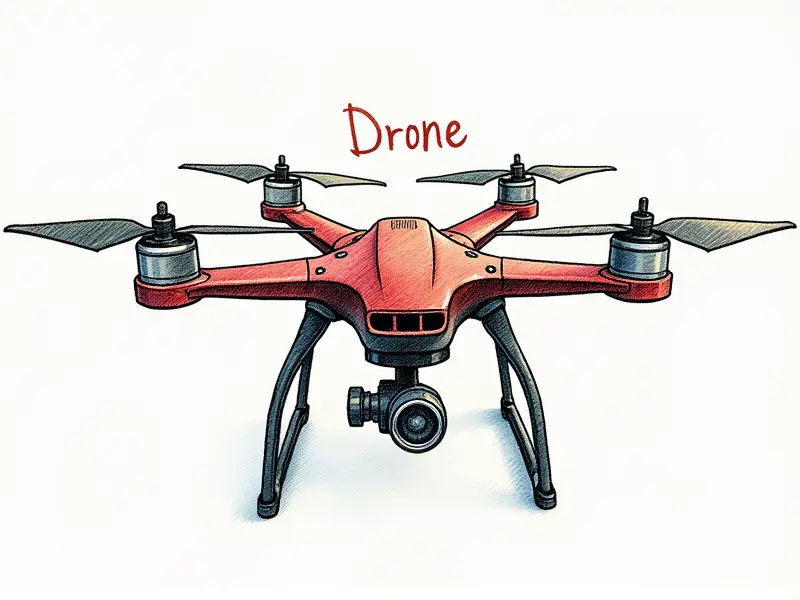iFlight drone crashes

How to Prevent iFlight Drone Crashes
Preventing drone crashes is crucial for maintaining the longevity of your iFlight device and ensuring a smooth flying experience. Here are some essential tips:
- Proper Pre-Flight Checks: Always conduct thorough pre-flight inspections, including battery levels, propeller balance, and signal strength.
- Weather Conditions: Avoid flying in adverse weather conditions such as strong winds or heavy rain. These can significantly impact your drone's stability.
- Familiarize Yourself with the Controller: Spend time learning how to maneuver your iFlight controller effectively, including understanding all buttons and functions.
iFlight Drone Safety: Tips and Tricks
Safety is paramount when operating any drone. Here are some safety tips specific to iFlight drones:
- Obstacle Avoidance: Be vigilant of your surroundings, especially in urban or densely populated areas.
- Use GPS Lock: Ensure that the GPS lock is engaged before takeoff to maintain stability and control during flight.
- Regular Maintenance: Keep your drone well-maintained by regularly cleaning components, checking for wear and tear, and replacing parts as needed.
Avoiding Costly Mistakes with iFlight Drones
Mistakes can be costly when dealing with high-end technology like the iFlight series. Here’s how to avoid common pitfalls:
- Overcharging Batteries: Avoid overcharging your drone's batteries, which can reduce their lifespan and performance.
- Inadequate Propeller Balance: Ensure that propellers are balanced correctly; imbalances can lead to erratic flight patterns and crashes.
- Lack of Training: Invest time in learning how to operate your drone properly, including understanding the manual and practicing in safe environments.
Understanding iFlight Drone Failure Patterns
To prevent future failures, it’s important to understand common failure patterns seen with iFlight drones. Here are some typical issues:
- Battery Issues: Low battery levels or malfunctioning batteries can cause sudden drops and crashes.
- Signal Interference: Weak signal strength due to interference from other electronic devices can disrupt control signals, leading to loss of control.
- Mechanical Failures: Wear and tear on components like motors or propellers can result in sudden failures during flight.
iFlight Crash Recovery Tips for Beginners
If your iFlight drone crashes, here’s what you should do to recover from the incident:
- Assess Damage: Carefully inspect the drone for any visible damage before attempting to power it on.
- Check Battery Levels: Ensure that the battery is fully charged and functioning properly. A drained or damaged battery can cause erratic behavior.
- Contact Support: If you’re unable to resolve issues, reach out to iFlight customer support for professional assistance.
Fixing Issues Before Your iFlight Drone Crashes
Taking proactive steps can help prevent crashes. Here are some maintenance tips:
- Regular Inspections: Conduct regular visual inspections of your drone to catch potential issues early.
- Calibrate Sensors: Regularly calibrating sensors ensures accurate readings and better performance during flight.
- Update Firmware: Keep firmware updated to benefit from the latest bug fixes and improvements.
Maximizing Flight Time on Your iFlight
To get the most out of your drone’s battery life, follow these tips:
- Battery Management: Use high-quality batteries and avoid overcharging or undercharging.
- Elevated Takeoff Points: Starting from higher elevations can help maximize flight time by reducing the energy required for ascent.
- Avoid High Winds: Strong winds consume more battery power, so plan your flights accordingly.
iFlight Drone Maintenance Essentials
Maintaining your iFlight drone is key to its longevity and performance. Here are some essential maintenance tasks:
- Cleaning Components: Regularly clean the propellers, motors, and other components of debris.
- Lubrication: Apply lubricant to moving parts as recommended by the manufacturer to prevent wear and tear.
- Software Updates: Keep your drone’s software updated for optimal performance and security.
Troubleshooting Tips for iFlight Crash Issues
If you encounter issues that lead to crashes, here are some troubleshooting steps:
- Check Connections: Ensure all connections between the drone and controller are secure and free of damage.
- Test Components Individually: Test each component separately (e.g., motors, propellers) to isolate faulty parts.
- Review Logs: Check flight logs for any error messages that might indicate the cause of a crash.
Protect Your iFlight Drone from Crashes
To protect your drone and minimize the risk of crashes, follow these preventive measures:
- Use Protective Cases: Transport your drone in protective cases to prevent damage during transit.
- Practice Safe Flying Zones: Choose open areas free from obstacles for optimal flying conditions.
- Follow Manufacturer Guidelines: Adhere strictly to the manufacturer’s guidelines and recommendations.
Learning from iFlight Drone Crash Incidents
Every crash provides an opportunity to learn and improve. Analyze what went wrong and implement changes to prevent future incidents:
- Document Failures: Keep a record of all crashes, noting the circumstances and potential causes.
- Seek Feedback: Share your experiences with other drone enthusiasts or online communities for insights and advice.
- Update Procedures: Adjust your pre-flight checks and operational procedures based on lessons learned from past incidents.
Conclusion
Maintaining a safe and reliable iFlight drone requires diligence in both maintenance and operation. By following the tips outlined above, you can significantly reduce the risk of crashes and ensure that your investment remains in top condition for years to come. Remember, prevention is key—take proactive steps to safeguard your drone and enjoy seamless flights every time.

